Empowering students with language-based learning differences
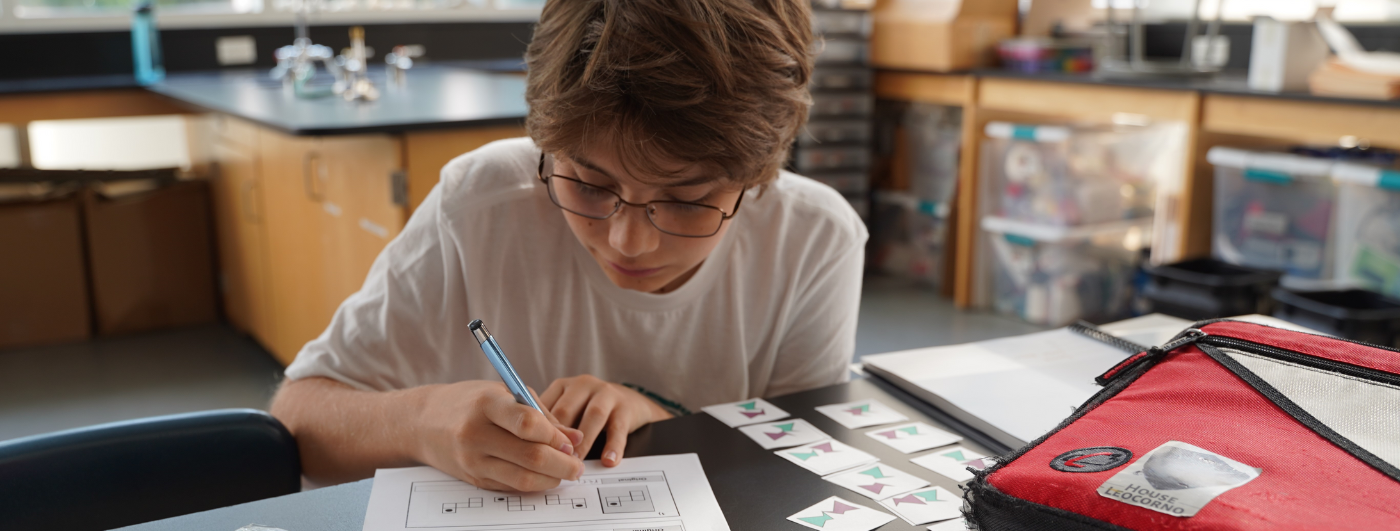
Siena Blog



The Siena School Blog
Discover, Learn, Celebrate, and Empower
Welcome to Siena's blog, your source for helpful, cutting-edge resources tailored to teachers, parents, and other advocates in the learning differences community. We are dedicated to providing a wealth of curated knowledge spanning various topics, ranging from dyslexia advocacy and awareness to classroom teaching strategies, heritage month profiles, and social and emotional health.
Discover innovative classroom strategies that inspire creativity and foster a love of learning.
Our commitment to social-emotional wellness ensures that we provide valuable insights into healthy student development and self-advocacy.
Discover resources, reading and podcast recommendations, volunteering opportunities, and more for parents in the LD community.
Our important heritage month posts highlight key people, offer reading and podcast recommendations, and more.
Mental Health Awareness Month 2025
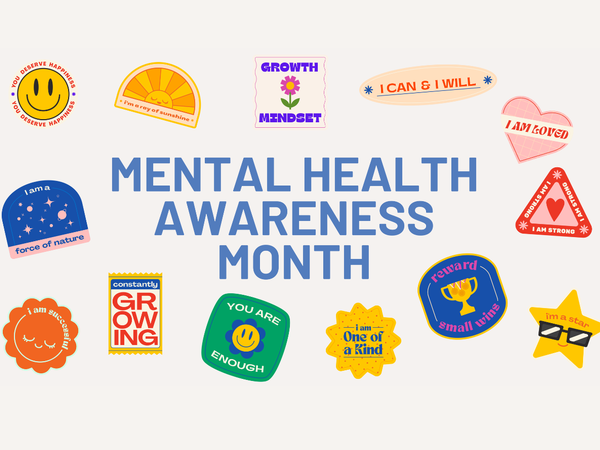
Avg. read time: 3 min.
Mental Health Awareness Month 2025
In honor of the Mental Health Awareness Month 2025 theme, “In Every Story, There’s Strength,” Siena is highlighting some important ways to raise awareness and share strategies for various mental health and neurodiverse needs.
There are many misconceptions and stigmas about mental health and receiving support, and our stories of self-care can help us to reduce stigma, increase empathy and awareness, and be proactive in terms of caring for our mental well-being.
How Parents Can Support Their Children’s Mental Health
There are a few ways we can regularly turn awareness into action, such as the following:
- Increasing understanding
- Reducing misconceptions
- Encouraging help-seeking
- Promoting empathy and compassion
- Challenging stigma
- Using or offering support networks
- Promoting positive representations
- Normalizing therapy and mental self-care
An easy way for parents to check in with their children’s own mental and emotional well-being is to have a conversation (even a short one). Here are some sentence starters to help facilitate that conversation:
- “I notice that you seem ___. Do you want to talk?”
- “What is an emotion that you are feeling right now?”
- “Tell me more about what you are experiencing….”
- ”I want to help. Would support or space right now help you most?”
Although your child might not want to share their story at that particular moment, it’s always important to encourage (and be available for) positive and healthy conversation surrounding feelings and emotions.
Sometimes, our children can be on opposite ends of the spectrum, from not talking at all to hyperbolizing emotions. Parents and other caregivers can be the “calm” and the anchor that your child needs when they feel strong emotions. Showing up consistently and being available for support will go a long way for your child as they continue to tell their stories on their own terms.
Another action we can take is showing empathy, curiosity, and understanding whenever possible, which in turn models good mental health behavior for children so they can contribute to a more accepting and positive environment for all.
Mental Health Resources for Parents
It can be a challenge for parents to navigate when to get support for their child, as well as to find a provider that fits. Below are some helpful resources to get started:
- Anxiety Institute
- Child Mind Institute
- Kingsbury Wellness & Learning Group
- National Council for Wellbeing (includes a free downloadable checklist)
- Psychology Today
Siena Resources
For additional information from The Siena School blog to help navigate students’ social–emotional health, see this post from last year about summer mental health awareness, as well as these about learning differences and confidence and online and offline boundaries for teens.
The Siena School, a national leader in dyslexia education, serves bright, college-bound students with language-based learning differences on DC Metro area campuses in Silver Spring, MD (grades 3-4 and 5-12) and Oakton, VA (grades 3-12).
Support and Self-Care Over the Holidays
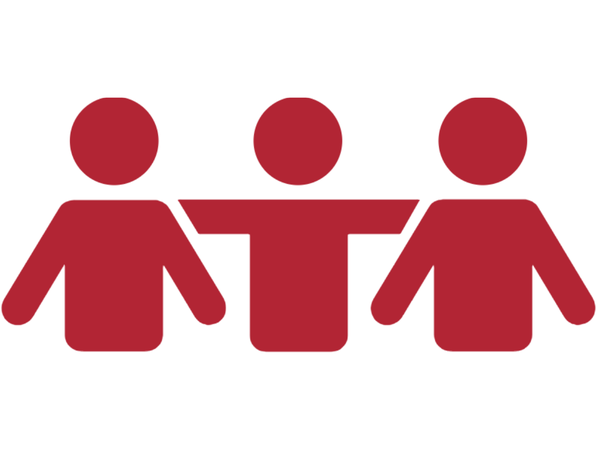
Avg. read time: 3 min.
As we approach the holiday season, you may be feeling lots of emotions—excitement, gratitude, relief, anxiety, frazzle, overwhelm…sometimes all of these at once.
Rest assured: this is very normal.
I want to take this opportunity to share some tips and reminders for supporting both your families and yourselves—all year round but especially during the holiday season. Ultimately, I hope that you enjoy your time with those you care about, and I also encourage you to take time for yourself.
Parents Supporting Themselves
Holidays can be especially overstimulating for everyone; the impact on our neurodiverse population is more severe. This can require additional emotional support for families during what is also a fun and family-centric time.
During such an engaging and active time of year, remember that boundaries, self-care, and overall mindfulness are very important. Siena’s counseling office often shares holiday mental health tips with families, including:
- Schedule downtime: Holidays can very easily end up overscheduled with no time to relax, so reserve a few nights for your family (or just yourself!) to do whatever self-care works best.
- Eat, sleep, and hydrate: During the holidays, our routines are interrupted, and basic needs sometimes aren’t met. Help your family—and yourself—by prioritizing physical self-care.
- Get outside: Spending time outdoors can have major mental health benefits, such as lower stress, better mood, and increased empathy and cooperation. Make time to take daily walks.
- Acknowledge loss: For many people, the “happy holidays” come along with feelings of grief and anger. Maybe it’s the first holiday after a loved one’s passing, or there are traditions that highlight strained family relationships. Remind your children that their feelings are normal.
- Set everyone up for success: Plan ahead for (or avoid) situations that typically don’t go well for your family. Don’t be afraid to remove yourself or your kids when boundaries aren’t respected. Children especially may need your support to know it’s okay to leave a tense situation.
Parents needing extra support can see these Child Mind Resources with a laundry list of articles to refer to, including ones about traveling with children and taking the stress out of holiday gatherings.
Overall, the holidays are a great opportunity to gather with loved ones and engage in community traditions, which can also highlight neurodiverse students’ strengths, creativity, and energy.
Parents Supporting Neurodiverse Children
The needs of neurodiverse students was the central focus of Siena Forest Glen’s annual elementary and middle school performance. This fall the students performed an original adaptation of Fifty-Four Things Wrong with Gwendolyn Rogers, based on the novel by Caela Carter. Fifty-Four Things follows a girl who reads her confidential IEP report listing the emotional and personality traits that define who she is, including Lazy, Picky Eater, Talks Too Much, and many other things supposedly “wrong” with Gwendolyn.
By the end of Fifty-Four Things, though, everyone realizes Gwendolyn’s many strengths and energetic curiosity about the world around her. The story's major theme is how teachers and parents can meet neurodiverse children where they are and work with their differences and their diverse strengths. This resonated strongly with students, staff, and parents in the Siena community and matches how we support our students and embrace their strong qualities.
With ADHD diagnoses for children ages 3-17 rising, it’s especially urgent for parents and teachers to have shared knowledge about how to understand neurodiverse students like Gwendolyn. Among other available resources, these books are helpful guides in understanding neurodiversity and learning differences:
- Conquer Negative Thinking for Teens — Dr. Mary Karapetian and Alvord Anne McGrath
- Detox Your Thoughts — Andrea Bonior, PhD
- Freeing Your Child from Negative Thinking — Tamar Chansky, PhD
- How to Get Unstuck from the Negative Muck — Lake Sullivan, PhD
- Raising a Kid Who Can — Catherine McCarthy, Heather Tedesco, and Jennifer Weaver
- The Dyslexic Advantage — Drs. Brock and Fernette Eide
See also How Schools Can Support Neurodiverse Students from the Child Mind Institute.
The CDC regularly updates data and statistics on ADHD that affect students at home and in school. In the DC area, for example, The Chesapeake Center and Kingsbury Wellness offer testing and therapeutic services for families.
Additional Self-Care Resources
For additional information to navigate students’ social–emotional health, see posts about learning differences and confidence, online and offline boundaries for teens, and social media in our Social and Emotional Health section.
The Siena School, a national leader in dyslexia education, serves bright, college-bound students with language-based learning differences on DC Metro area campuses in Silver Spring, MD (grades 3-4 and 5-12) and Oakton, VA (grades 3-12).
Making the Most of Parent-Teacher Conferences
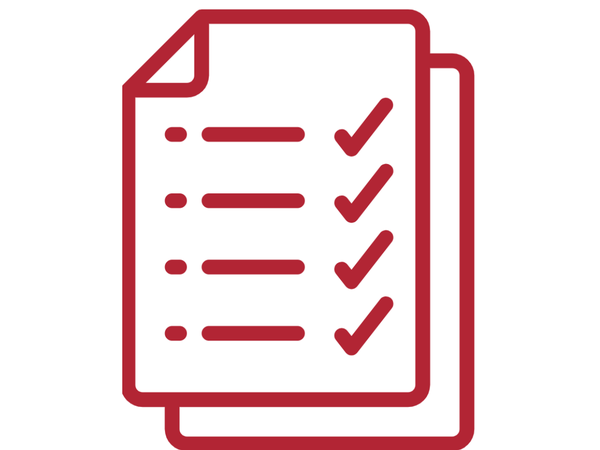
Avg. read time: 3 min.
Advice for Parent-Teacher Conferences
Conferences are incredibly important to develop a communicative relationship with your child’s teachers. Remember that the goal of each conference is to help your child be successful in and out of the classroom. Conferences are a powerful occasion for meaningful communication with your child’s teachers to review students' assessments to date and answer questions about the rest of the year.
You may only have 10 minutes with each teacher, so being on time and well prepared for the conference is vital. Be sure to ask lots of good questions, encourage your student at home, and remember that you are an important part of the educational equation to help your child get the most out of their educational experience.
Let Siena help you get the most out of conferences with your child’s teacher with these tips and questions:
Prioritizing
Try and prioritize topics to address with each teacher before you go to the conference, since time is so limited. We recommend writing down a list of questions to go over during the conference. To think of some questions, talk with your child before the conference. Explain that this meeting is to help them and to not worry about the conference. Ask your child:
- What are your strongest and weakest subjects?
- What subjects do you like the most and least?
- Is there anything specific you’d like me to ask your teacher?
Asking and Listening
During each conference, listen carefully to what the teacher says. Write down key information you’d like to remember or questions you want to ask at the end of the conference. If you don’t understand something the teacher is talking about, like an educational term or an explanation of a school policy, don’t be afraid to ask for clarification.
It is important to understand what your child’s teacher is telling you. If there is a problem that needs addressing, ask your teacher to work with you to create an action plan that may be implemented in the classroom and at home. Here are some questions you may ask each teacher:
- What is an important goal for [child’s name] in your class? How have you communicated this to them?
- If there was one tool or strategy you wished [child’s name] used, what would it be? What can be done in class and at home to encourage this tool and/or strategy?
- What should we do to support you at home?
You may also ask teachers what authentic assessments they are providing in their classrooms. Authentic assessments are assignments that give students multiple ways to demonstrate proficiency and real world applications for their skills apart from traditional tests and quizzes.
Talking with Your Child
Following the conference, discuss what you learned with your child by emphasizing positive points and being direct about problems. Make sure to follow through with what was discussed during the conferences at home, especially if an action plan was created.
Here are some questions you could ask your child after meeting with their teachers:
- How often do you feel in control of your own learning? How can I help you better feel in control?
- Do you feel organized at school and at home? If not, how can I help you?
- Is there anything you wish we would know about how you’re doing in school? Can we talk about ways to help?
Siena Blog and Resources
For additional relevant information from The Siena School blog, see our Parents and Community category, as well as previous posts about tech detoxing for teens in school and common language in LD education.
The Siena School, a national leader in dyslexia education, serves bright, college-bound students with language-based learning differences on DC Metro area campuses in Silver Spring, MD (grades 3-4 and 5-12) and Oakton, VA (grades 3-12).
Dyslexia Reading and Podcast Recommendations

Avg. read time: 2 min.
As part of Dyslexia Awareness Month 2023, Siena has put together this short guide of books and podcasts that can help families in the LD community navigate their children’s specialized learning and social–emotional needs.
Book Recommendations for Dyslexia Awareness Month
- Adventures of Everyday Geniuses series
- Fish in a Tree by Lynda Mullaly Hunt
- Gifted and Distractible by Julie Skolnick
- Make it Stick by Peter C. Brown, Henry L. Roediger III, and Mark A. McDaniel
- Overcoming Dyslexia by Dr. Sally Shaywitz
- The Dyslexic Advantage by Drs. Fernette and Brock Eide
- The Knowledge Gap by Natalie Wexler
See also Siena’s in-house parent resource library list, The Literacy Nest, National Education Association, and Yale Center for Dyslexia and Creativity for more reading recommendations.
Podcast Recommendations for Dyslexia Awareness Month
See The Siena School blog for these related resources for LD families:
- Black and Dyslexic
- Fish Don't Climb Trees
- Lessons in Dyslexic Thinking (Made By Dyslexia)
- Dyslexia Coffee Talk (The Dyslexia Initiative)
- Tell Me This episode featuring Siena’s Dr. Jilly Darefsky
- The Invisible Gift
- The Science of Reading episode featuring Dr. Sally Shaywitz
- The Truth About Dyslexia
Blog Post Recommendations for Dyslexia Awareness Month
See The Siena School blog for these related resources for LD families:
- Common Acronyms in LD Education
- Podcasts for Every Interest
- Summer Reading At Siena
- Winter Break Podcast Recommendations
- Winter Break Reading at Siena
The Siena School proudly serves students with dyslexia and other language-based learning differences in grades 3-12 on campuses in Silver Spring, Maryland, and Oakton, Virginia.
Social Media and Mental Health
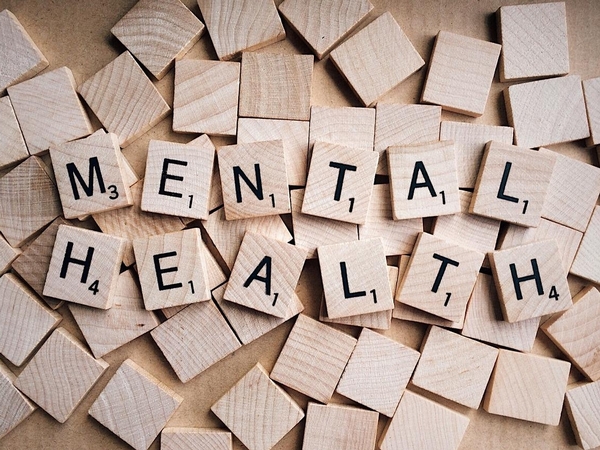
Mental Health Awareness Month is here, and let’s start with a fact: 46% of Americans will meet the criteria for a mental health condition.
The COVID pandemic has indeed brought on the topic of mental health, as it has been detrimental to some and posed particular mental health challenges. However, research shows that symptoms of mental health—mainly depression and anxiety—have shown increasing trends even before the pandemic.
Given its ubiquity, social media is closely tied to mental health issues, particularly in tweens and teens. Social media usage has both positive and negative effects for young people, so it’s important for parents to be aware of how multifaceted social media is. Let’s take a look at what may be causing these trends to continue rising, as well as some strategies for mental health and social media use that can be implemented to help build resilience.
Social Media and Mental Health
Derek Thompson’s recent article on why teens are so sad refers to four different factors that may have contributed to this increase in anxiety, depression, and other mental health issues:
Social Media
Although there are many benefits to having social media and being connected to lots of information, there are also serious detriments if it is not monitored or used properly. In a video on the addiction of social media and technology in general, writer and speaker Simon Sinek notes that the brain is permanently altered when there is too much stimulation from different modalities of technology (e.g., phones or computers). These permanent changes can cause slower brain function. Thompson’s article states that social media may not be a “rat poison” on tweens’ and teens’ mental health but rather a contributing factor that may lead to higher rates of depression and dependency.
Decrease in Sociality
Social media, as well as many months in isolation during the height of the pandemic, have limited the amount of socialization that people are doing. Moreover, even when some school and other social events opened back up last year, distancing and other restrictions required young people to learn new ways of socializing.
Social media has replaced certain activities, such as hanging out with friends, obtaining a driver’s license, or engaging in extracurricular activities, which can lead to increased feelings of loneliness and isolation.
Stressful World (and More News About It)
Unquestionably, our world over the last few years has been very stressful. Unfortunately, there is also more exposure to hearing of this news due to social media and the immediacy of the internet. Our tweens and teens are reading more about the things that go on in our world, and this causes more levels of stress, which in turn can cause increased amounts of anxiety, depression, and pessimism.
This is especially true right now, due to the recent tragedy in Texas at Robb Elementary School. News such as this mass shooting can be extremely hard to process, especially when we are constantly being updated. Creating space away from the news as well as utilizing resources such as the ones listed below are helpful in checking in with each other and our own mental wellness.
- Talking to Children about Violence: Tips for Parents and Teachers (National Association of School Psychologists)
- 10 Strategies for Talking to Children about School Shootings (Psychology Today)
- Helping Your Children Manage Distress in the Aftermath of a Shooting (American Psychological Society)
- Talking to Children About Tragedies (American Academy of Pediatrics)
Modern Parenting Strategies
Yes, it can be hard to manage our children and teens and protect them from harm. However, certain modern parenting strategies could be more of a hindrance, rather than a help. As parents, our reaction may be to accommodate a child dealing with an anxiety-provoking trigger (such as a dog) by helping them to avoid anxious situations. Although potentially helpful in the short term, avoiding anxious situations could enable the anxiety and also keeps the child from building resilience, which is so necessary for helping our children be successful as they grow up.
Instead, parents might encourage their children to work with a counselor or therapist to devise strategies to label their emotions, validate feelings, communicate and process what is in their control, as well as come up with coping mechanisms to handle stressors. Many of these conversations are helpful when implemented in the home as well! Communication with tweens and teens is key to understanding them, interacting with them, and helping them develop emotionally and persevere through adversity.
Strategies for Building Success and Social Media
With the trends of mental health symptoms increasing, more anxiety and depression amongst our children, and no end to the technology in our lives, how do we help protect our kids without enabling them? This seems like an impossible task!
This article from educational psychologist Michele Borba lists seven skills for building success versus building struggle in our children and teens. Ideally, we as parents are being less accommodating, creating opportunities for exposure to triggers or stressors, having them fix their problems on their own (with guidance) and building empathy and strategies to help them navigate. The seven skills are:
- Self-confidence
- Empathy
- Self-control
- Integrity
- Curiosity
- Perseverance
- Optimism
Ultimately, Borba writes, the idea is to help “boost mental toughness, resilience, social competence, self-awareness, and moral strength.”
It remains important as parents that we monitor social media usage as well as technology overall. Encouraging more time with friends and family, getting outside, participating in extracurricular activities, and limiting the amount of screen time is ideal. Social media contracts (such as this one) may be useful for setting up boundaries. Always communicate with your child about the potential harm of social media and balancing screen time with social time.
Taking care of ourselves and our children is of utmost importance during this time. Communication amongst the family, setting appropriate boundaries, and having coping strategies for all will be so helpful in creating healthy habits and building resilience in everyone.
For related resources, see Devorah Heitner Raising Digital Natives, as well as Delaney Ruston’s film Screenagers: Growing Up in the Digital Age. And, see Siena’s blog for more posts about social and emotional health, including some lessons in self-care and tips for socializing.
Connecting With Your New School Community
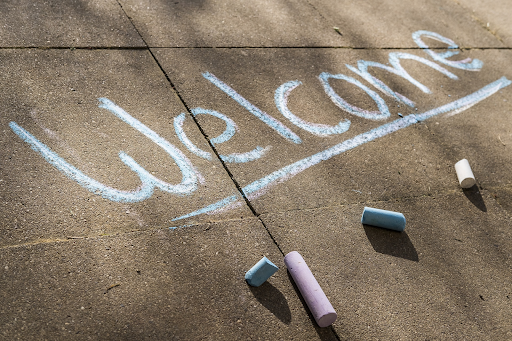
Note: This post contains updated information from earlier blog posts (2018, 2020).
Whether you’re brand-new to a school or a returning family looking to welcome new students and their families, late summer is the perfect time to start building connections for the upcoming school year.
Since last school year began virtually for many districts, the beginning of the 2021-2022 school year might also feel new, even for returning students. It’s especially important, then, to get students in touch with each other soon so they can start building the relationships that they’ll bring into the new school year.
Making Connections: Before School Starts
- Review the Parents page on the school website for resources, supply lists, the school year calendar, and more.
- Learn about your school’s Parents Association. Remember that student grade representatives are great for welcoming new families. Once they have contact information for new families, grade representatives can reach out and arrange various activities. This is a wonderful way to meet families who have been at the school for years, as well as learn about grade-specific events.
- Check to see if your school has a private social media group for families to share information and resources. This could be a great way to connect with families across grade levels. You might need a moderator to give you access to the group, but this is usually a simple process.
- See if parents already have access to the school directory to contact other families in your child’s grade and arrange a time and place to meet (such as a local park or other outdoor space). Parents could also trade ideas for small-group social activities like hiking or biking in locales with adjacent trails (such as Brookside Gardens, Lake Needwood trails, Lake Frank, or Meadowbrook Park in Montgomery County, MD). Parents could end such activities with a potluck picnic to give everyone a chance to learn more about each other.
- Check your school’s website or blog for any resources geared toward parents and the community.
Making Connections: The New School Year
- Attend school-based meetings: often, schools will kick off the transition to the new year by hosting a grade-level event to allow the families to become involved.
- Attend Back to School Night, which is typically the first major school event of the year. While you’re waiting to enter the classroom and meet your child’s teachers, why not introduce yourself to a nearby parent? There is a chance that their child is a classmate and might be a great resource for homework help.
- Go to a Family Picnic or similar gathering if your school offers one. This is a wonderful way to meet families who have been at the school for years. If you are a returning family, you remember how important this event was to help with the transition to a new environment. Make sure you introduce yourself to the new families and help them get engaged with the school’s community.
- Consider attending parent association meetings as a way to meet new school members. There is always time to network before and after the meeting. You will also gain valuable insight from the shared topic of the evening.
- Plan a regular biweekly or monthly meetup of parents after drop off at a local park or café.
- Remember that you can volunteer to be a Grade Representative. This will definitely get you connected with every parent in your child’s grade. Grade Reps are a great resource to help you learn about activities related just to your grade.
Helping new families get acclimated to the school community is mutually beneficial—particularly as students continue to adjust to changing guidelines for social interactions.
Whether you’re just joining The Siena School or returning for another year, don’t hesitate to find a way to get involved and stay connected with the community.
How Parents Can Maintain Support Networks

It’s been quite a year, hasn’t it?
Given how much has changed in terms of parenting, schooling, work–life balance, and more, parents should remember that they’re not alone. A few months ago, Siena counselor Holly Rothrock wrote an excellent blog post on experiential self-care lessons. While originally written for students, these lessons are relevant for parents in caring for their mental health and feeling connected.
Online Resources for Support and Community
Siena’s website has a number of resources for parents about learning differences, college applications, and more. Here’s a list of books we have in our parent resources library that you might also find helpful. Parents needing to feel connected as more schools are reopening could check some of these educational resources:
- Parents’ Place of Maryland includes access to links, podcasts, and more about schooling, mental health, and COVID.
- The Parent Encouragement Program (PEP) has some resources specific to COVID and telework, as well as parenting classes, a blog, and resource library.
- Hey Sigmund has plenty of good material about anxiety management and sleep habits for kids.
- Child Mind Institute, while not a support group per se, has a lot of great information to complement the above resources.
Parents could also check if their children’s schools have any online groups for sharing resources, advice, and support.
Resources for Parents of Children with Learning Differences
- Community Connections for Parents is a support group for parents of children with learning differences, ADHD, and anxiety.
- The Study Pro (Virginia) hosts a learning series for parents. The topics range from executive functioning and anxiety to writing coaching for various grade levels.
- ADDitude has ample information for ADHD and a discussion forum.
- On Facebook, parents can consider joining Dyslexia Support and/or Decoding Dyslexia MD. Dyslexia Support is a private group that offers practical advice, book recommendations, and emotional support. Decoding Dyslexia MD is a public group with posts on where to find a tutor, where to get your child assessed, questions about schools, and more.
- WISER has events, webinars, experts, and more for parents of children with learning differences.
- Understood has plenty of information for families, including the Understood Community.
See more of The Siena School blog’s resources for parents, including how new families can connect with the parent community.
Do you have any favorite or particularly helpful online resources to share? Comment below or email me. You can be anonymous if you wish.
Note: We do not endorse any of these websites or resources. Always check the privacy and appropriateness for your child.
Healthy Lunches and Snacks for School Reopening
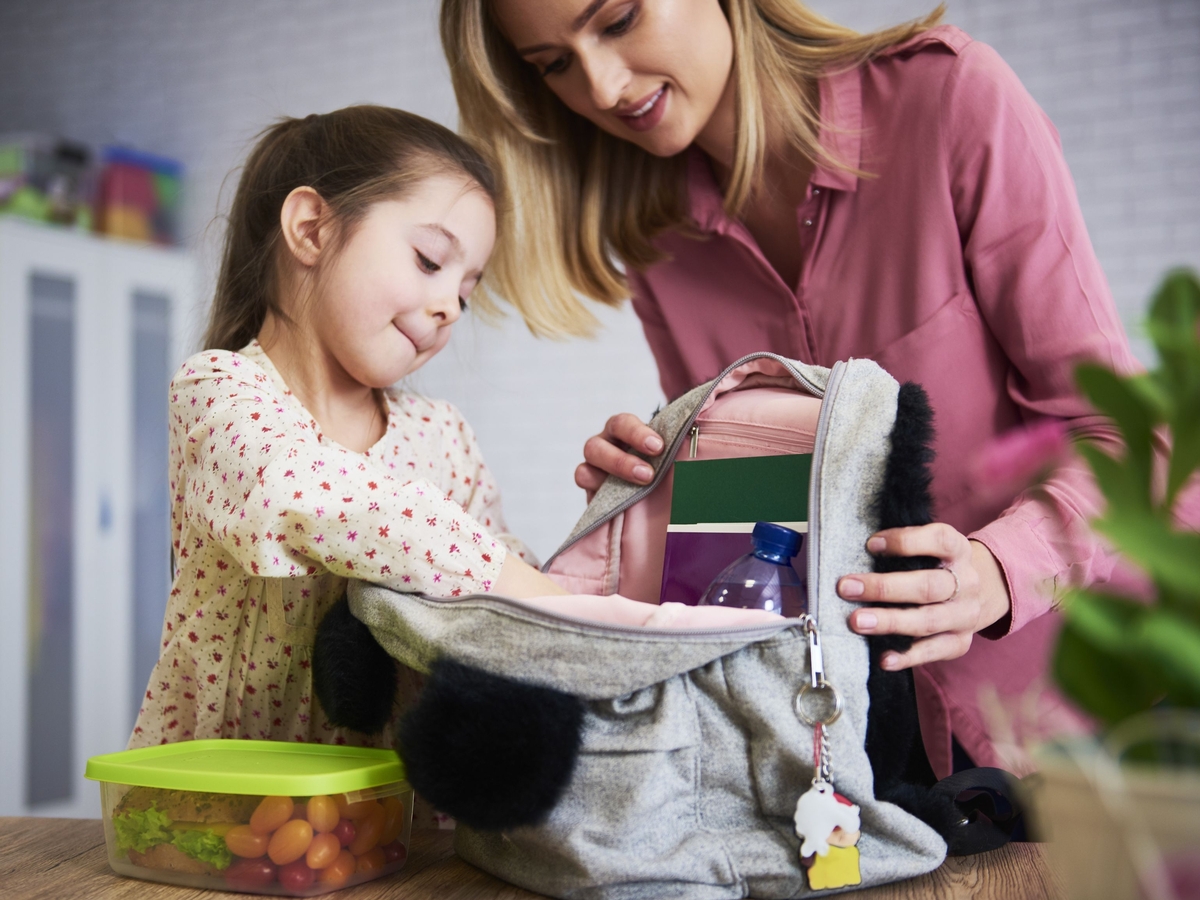
With more schools planning to begin in-building instruction in the coming weeks, are you wondering how to adapt to rules about social distancing and lunch routines?
Lunches and snacks that are healthy, convenient, and don’t need to be reheated or refrigerated at school are especially important, since many students won’t be able to use microwaves or other shared equipment. What are good options for lunches, snacks, and food containers when students return to the school building?
Food and Snack Ideas for School
To maintain a healthy school environment, students’ meal needs should (1) be self-contained, (2) require minimal touching, and (3) not need refrigeration or reheating.
Although you’ll probably continue sending some of the same lunch and snack foods as before, there are some additional options (including ideas for touchless meals) to limit foods that need to be eaten by hand:
- The Sweet Potato Chronicles gives many ideas for touchless lunches and snacks that can be reheated before school, stored in thermoses or similar containers, and eaten with utensils. Watch writer Laura Keogh demo some recipes.
- This clip from Breakfast Television (Canada) shares recipes and other ideas from two work-from-home mothers.
- UC Davis Health has several healthy lunch and snack ideas that parents could adapt based on their kids’ tastes and dietary needs.
- A personal favorite are peanut butter and banana energy bites; they’re healthy and easy to make—even for kids! (Almond or cashew butter could be substituted for peanut butter.)
- There are many healthy options for homemade Chex Mix or trail mix: cereals, nuts, dried fruit, yogurt raisins, and more all go well together and are easy to dole out into individual servings.
- Prepackaged, nonperishable snacks like cereal bars, newtons, and granola bars are portable and durable.
- See some nut-free options from Momables and A Mindful Mom, including a DIY pizza, mini ham-and-cheese bites, and lunch wraps.
Meal options such as these are healthy and portable; they can also be eaten with a fork or spoon to be touchless. Kids can help choose or put them together days in advance and then be ready for the week.
Lunch Containers and Other Supplies for School
Since students won’t be able to use microwaves or refrigerators at school, they’ll need portable lunch equipment to keep food at the right temperature, such as:
- A food thermos or soup container for meals they can warm up before coming to school;
- Lunch containers with either freezable lids or built-in ice packs in lieu of using a refrigerator;
- Reusable cutlery with its own carrying pouch;
- Durable and insulated water bottles for cold or warm drinks;
- A CrunchCup for cereal on the go;
- Durable lunch boxes and bags—Good Housekeeping has a list of the 15 best lunch boxes and bags (including some insulated ones); and
- An extra sealable bag for students to put their mask in while eating. (Note: there are many options for reusable sealable bags.)
Clip-on hand sanitizer is especially important as well; many parents have gotten good deals on large containers of hand sanitizer for refilling portable ones. Travel-sized antibacterial hand wipes are also useful, and students could maintain cleanliness by putting the used wipe in the foil pouch for later disposal.
Have a favorite snack idea or supply? Let us know in the comments.
If you need more ideas and resources for parents, see The Siena School Blog, including helping left-handed students and ensuring self-care.
*Note: We do not actively endorse any of the above sites, recipes, or resources. Please check them for allergens and other food sensitivities for your child.
Creating a Virtual Community for New Families

Connecting To Your School Community Online
Joining the community at a new school has always been important for families: whether it is finding new friends for children, exchanging contact information, arranging meet & greets to get children and parents together, or sharing information on where to find school supplies.
It’s become extra-important this year with so much of our socializing and community formation becoming virtual. But, there are still plenty of options for new school families to meet current ones and get the kids acquainted before the school year starts.
Families can start connecting with each other now to ease the transition from summer to the new school year. There are also plenty of ideas out there for art projects, games, and more to help families get acquainted and grow the school community.
Resources for Online School Communities
 Making Connections
Making Connections
- Look at our recent blog post about virtual summer vacation, which offers ideas for having a virtual book club or movie night, among other ways to keep kids connected.
- Remember that student grade representatives are especially important now for welcoming new families into the school community virtually. Once they have contact information for new families, grade representatives can reach out and arrange a virtual activity. This is a wonderful way to meet families who have been at the school for years and learn about grade-specific events.
- Attend school-based meetings: often schools will kick off the transition to the school year by hosting a grade-level event to allow the families to become involved.
- Check to see if your school has a private social media group for families at the school for sharing information and resources. This could be a great way to connect with families across grade levels. You might need a moderator to give you access to the group, but this is usually a simple process.
- While ensuring that you adhere to state and local guidelines, parents could also trade ideas for small-group social activities like hiking or biking in outdoor, socially distanced spaces with adjacent trails (such as Brookside Gardens, Lake Needwood trails, or Meadowbrook Park in Montgomery County, MD).
 Online Resources, Games, and Activities
Online Resources, Games, and Activities
- The Kids’ Table offers virtual cooking classes for kids to learn cooking and baking skills with each other and their families.
- There are plenty of online board game options from Parents.com that school families can build a virtual game night around: Monopoly, Clue, and more. Remember also that Jackbox offers family-friendly games.
- Happy Hooligans has plenty of virtual science activities for kids to learn and try out with each other.
- STEAM Powered Family has some at-home science ideas and “Summer Boredom Busters” that families can work on together for socializing and community building.
With a different kind of school year approaching, virtual socializing will help families and kids stay connected throughout the summer. Expanding friendship and community circles now will not only give kids and families something else to do in the dog days of summer; it will also help expand the support network everyone will need in the coming school year.
